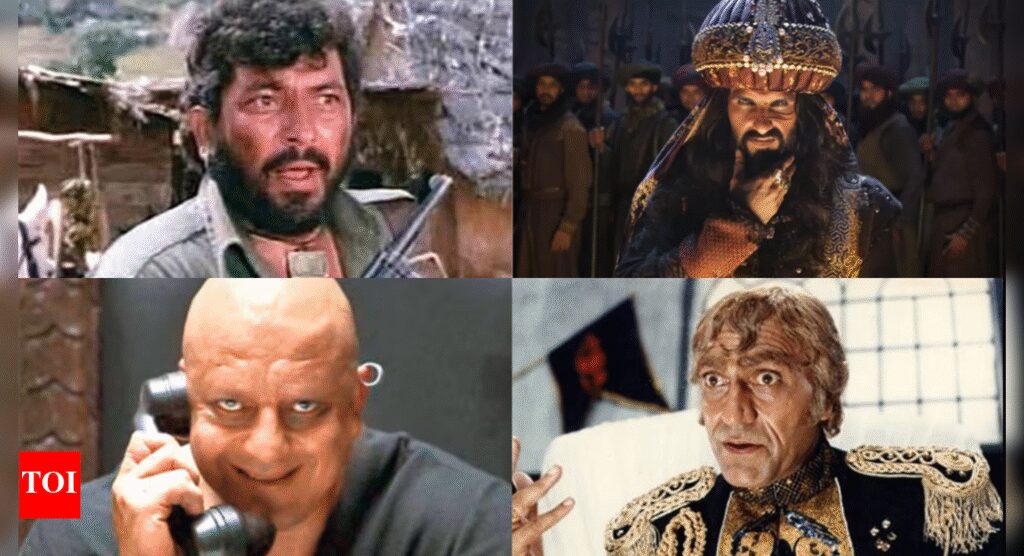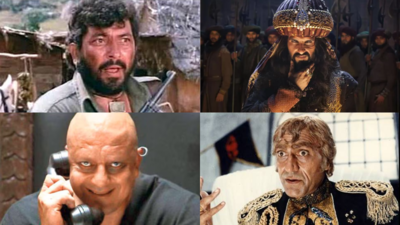Bollywood’s villains once loomed large, their menacing presence as iconic as the heroes they opposed. From the chilling laughter of Gabbar Singh to the sinister calm of Mogambo, these villains defined eras and drove stories. But over time, the role and relevance of the Bollywood villain has undergone a dramatic transformation- sometimes fading, sometimes evolving, but never truly disappearing. What happened to these baddies?
The Golden age of the Bollywood villain
In the 1950s to 1970s, Bollywood villains were painted like the artist wanted them to be the main characters. They were symbols of societal evils-corrupt moneylenders, oppressive zamindars, and ruthless dacoits. Actors like Pran, Amjad Khan which is Gabbar Singh in ‘Sholay’, and Ajit became household names, their characters clear-cut in their wickedness. The audience always knew who to root against.
Shades of grey in the 1980s and 1990s
As Indian society changed, so did its cinema. The 1980s and 1990s saw villains becoming more nuanced. Rather than being evil for evil’s sake, they were shaped by personal vendettas or social injustices. Amrish Puri’s Mogambo in ‘Mr. India’ and Sanjay Dutt’s Ballu in ‘Khalnayak’ brought complexity, even sympathy, to their roles. The rise of the anti-hero blurred the lines between good and bad, making audiences question their own allegiances.
While speaking with India Today, Javed Akhtar explained that the portrayal of villains in Hindi cinema has always reflected the social and economic realities of the time. He said that in the earlier days, the villain was often a zamindar or a thakur, like the character Sukhilala in Mother India. These figures represented the oppressive feudal system that was in its final stages during that era. “That was the time when the feudal era was taking its last breath,” Akhtar said.
The disappearance and reinvention of the villain
By the 2000s, the classic villain seemed to vanish as romantic dramas and family-centric films dominated and somewhat became the mainstream genre, and the “bad man” was often missing altogether in the type of the film itself.
Many actors who specialized in villainous roles in the 80s and 90s either transitioned to other film industries, took on character roles, or saw their presence diminish in Bollywood. For example, Mukesh Rishi, known for his villainous roles in the 90s and early 2000s, became less active in Hindi cinema and moved towards regional films. Similarly, Ashutosh Rana, famous for his chilling antagonist roles, saw a decline in mainstream villain parts post-2000s.
As per a Hindustan Times report, Gulshan Grover, one of the last superstars of the villain role, explained this evolution: “Reel reflects real. The directors try to picture what they see around them. Earlier, characters were black and white from the beginning. They took pride in being a bad guy. Now, the characters want to talk like normal people. That’s why you don’t see the typical villains anymore”. He further added that societal changes contributed to this shift.
Modern Bollywood villains are less about moustache-twirling evil and more about psychological depth. They show contemporary anxieties-corporate greed, terrorism, political corruption, and personal trauma. Characters like Ranveer Singh’s Alauddin Khilji in ‘Padmaavat’ and Nawazuddin Siddiqui’s Faisal Khan in ‘Gangs of Wasseypur’ are products of their environment, shaped by circumstances rather than innate wickedness.
Pran’s grandson Siddharth Sikand, in a conversation with ETimes a few years ago, shared that the legendary actor would likely be disappointed with how villains are portrayed in today’s Bollywood films. He shared that while Pran played a variety of roles in his career, what truly excited him was playing the villain and doing so with unmistakable flair.
Siddharth pointed out that this flair in antagonistic roles is largely missing in current cinema. “Those days the maker didn’t want to project only the hero in a big way. Today, I see so many big star films but the villain is either a newcomer or a struggler. Maybe that increases the commercial viability of the project. But I am not saying that those guys should not be cast, it’s just that an antagonist ought to be more in-the-face,” he said.
Heroes turned Villains: The rise of the anti-hero
An interesting trend is the number of leading men embracing negative roles. Shah Rukh Khan’s obsessed anti-heroes in ‘Baazigar’ and ‘Darr’, Hrithik Roshan’s thief in ‘Dhoom 2’, and Saif Ali Khan’s Langda Tyagi in ‘Omkara’ all signal a willingness to explore the dark side, Rishi Kapoor, too reinvented himself as a villain in ‘Agneepath’ and ‘D-Day’.
Contemporary villains
Despite the supposed disappearance, 2023 saw a resurgence of memorable antagonists: Emraan Hashmi as Aatish Rehman in ‘Tiger 3’ brought a slick, modern menace to the screen.
Vijay Sethupathi’s Kaalie in ‘Jawan’ and John Abraham’s Jim in ‘Pathaan’ offered different shades of villainy-one ruthless, one with a tragic backstory. Bobby Deol’s much-anticipated turn in ‘Animal’ shows that the appetite for strong antagonists remains.


